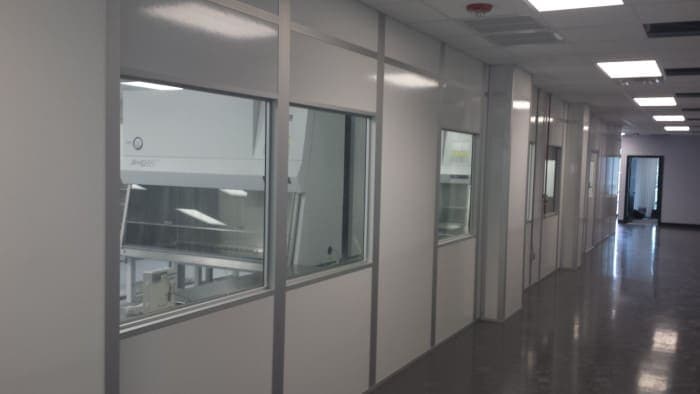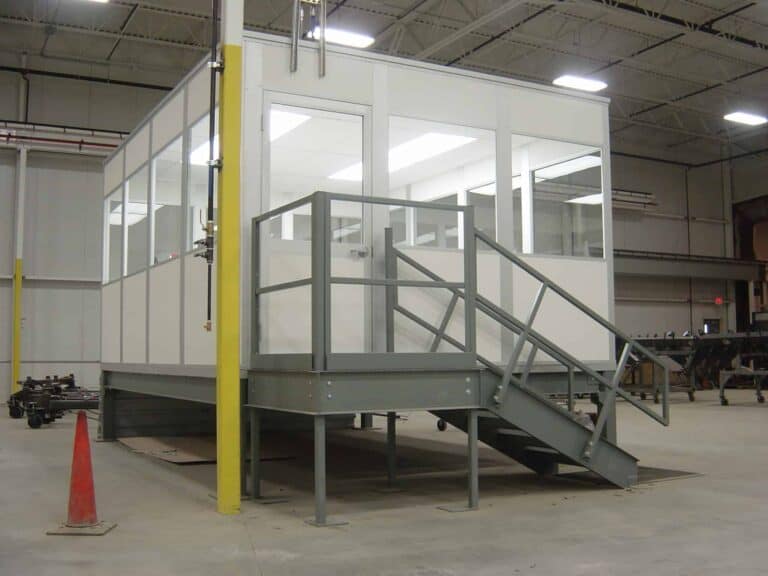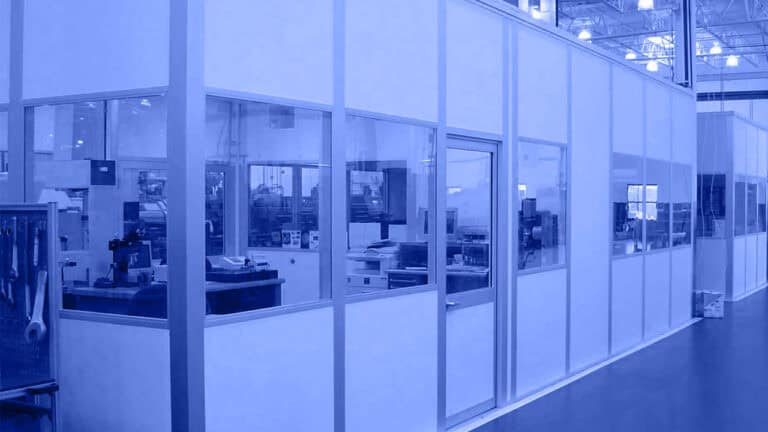Modular cleanrooms are essential in many different industries—from factory floors to laboratories. Due to the wide range of applications, you usually have several different factors to consider when choosing your cleanroom’s modular wall systems. To ensure you get the cleanroom that fits your needs, you must first understand:
- The level of cleanliness you need
- What the surrounding environment will be
- The importance of temperature and humidity control
- Your load bearing needs
Level of Cleanliness
Some people only need a modular cleanroom to provide a cleaner space inside (but separated from) a dirty factory, such as machine enclosures. A vinyl covered hardboard or drywall finish is typically all that is needed for these non-classified cleanrooms, unless there is concern about damage from surrounding machinery.
For these applications, additional panel finishes like painted steel or fiberglass reinforced plastic (FRP) can be supplied to create a more durable and impact-resistant surface.
ISO Standards
However, your cleanroom’s wall panels can also be classified under the ISO’s standards (ISO 6, 7, 8 etc.). If you need an ISO certified cleanroom, wall panel surfaces will be important. Your ISO standard will be determined by the level of cleanliness you are trying to achieve. The smaller the number, the cleaner the application. Most ISO classified rooms require the wall panels used in construction to have a non-shedding surface, or one that won’t give off fibers and other particulate matter. Surfaces can be made out of:
- High pressure laminates
- Smooth aluminum
- Fiberglass reinforced plastic
- Painted Steel
- PVC
Aluminum is an especially popular finish for cleanrooms used in manufacturing processes that cannot have static discharge inside the enclosure (often referred to as Anti-Static Dissipative (ASD) Enclosures). Aluminum does not conduct a current, making it static-proof. For many of these cleanroom applications, the non-shedding surfaces must also be utilized for the ceiling system to ensure the safest cleanroom environment possible.
Surrounding Environment
Where will your modular cleanroom be constructed? If the surrounding environment is a factory floor, it may require wall panels that are impact-resistant or sound-proof. Many of the wall finishes we supply as “non-shedding” also provide impact resistance making them an ideal choice for addressing both issues. For interior surfaces, ½ inch vinyl faced drywall is considered sufficient unless there is a requirement for a non-shedding surface.
Temperature & Humidity Control
Many cleanroom applications also require temperature and humidity control. Modular cleanrooms have an insulating core that makes temperature and humidity control possible. Typically, the thicker the wall panel the higher the R-Value (or insulation value). The more control you intend to have, the more insulation becomes a factor. More insulation makes it easier to control temperature. There are three thickness varieties to choose from:
- 1 ¾ inch
- 3 inch
- 6 inch
Higher insulation is especially important when housed inside a non-conditional environment like a factory. If the surrounding environment is controlled, it’s possible to use a thinner wall system with less insulation.
Load Bearing Capabilities
Many modular cleanrooms place equipment on the roof or ceiling to maximize space for personnel. While 1 ¾ inch wall panels are not as reliable for supporting overhead equipment, 3 inch and 6 inch thick walls can be designed to support a roof system that is load bearing. Discuss your design needs with a professional before making any wall system decisions in case the load or seismic-heavy location requires additional modular mezzanines for support.






